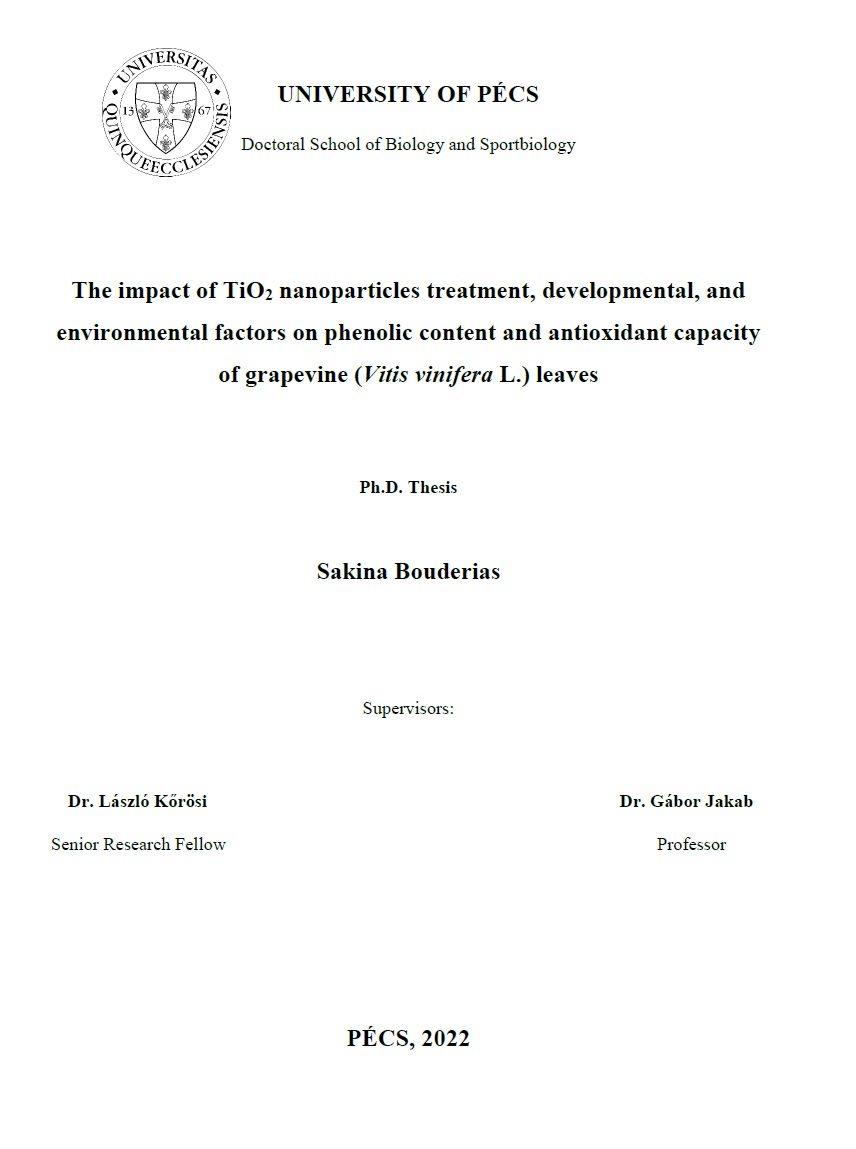The impact of TiO2 nanoparticles treatment, developmental, and environmental factors on phenolic content and antioxidant capacity of grapevine (Vitis vinifera L.) leaves
Abstract
Over the last decades, researchers used several elicitors to increase secondary metabolite
synthesis (D'Amelia et al., 2018; Anjum et al., 2019). Several studies are now using a variety of
nanoparticles (NPs) as unique and effective secondary metabolite elicitors in planta of several
plant species. The most frequent "nano-elicitors" include carbon nanotubes (CNT), silver (Ag),
gold (Au), copper (Cu), zinc oxide (ZnO), and titanium dioxide nanoparticles (TiO2 NPs) (Anjum
et al., 2019; Khan et al., 2021; Lala, 2021). TiO2 is one of the most popular commercially available
nano-size materials that has found application in a variety of fields due to its wide availability,
biocompatibility, low cost, non-toxicity, and high chemical stability. In nature, TiO2 exists in four
polymorphs: anatase, rutile, brookite, and TiO2 (B). The physical and chemical features of TiO2
depend on the crystal phase, size, and shape of the particles. For example, different phases of
crystalline TiO2 have varied band gaps, such as rutile and anatase TiO2, which have 3.0 eV and
3.2 eV, respectively, and these band gaps impact TiO2's photocatalytic activity. The activation
of TiO2 NPs by photon energy equal to or more than the TiO2 band gap energy drives an electron
from the valence band to the conduction band, leaving a hole in the valence band; electron-hole
pairs (the charge carriers) are formed. The electron and hole participate in redox reactions with
species adsorbed on the surface of TiO2 such as H2O and O2 to generate reactive oxygen species
(ROS). ROS are efficient against pathogens and the degradation of hazardous organic compounds
(Kőrösi et al., 2019b). Furthermore, they play a crucial role as signal molecules for upregulating
antioxidant defense in plants.

